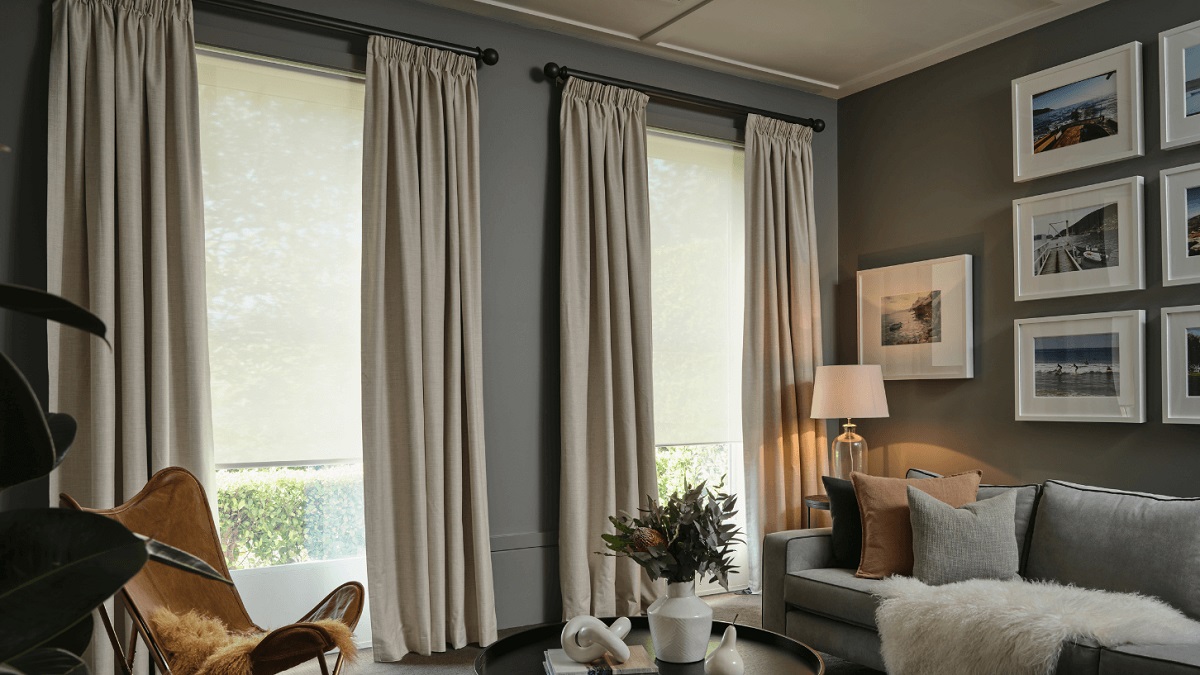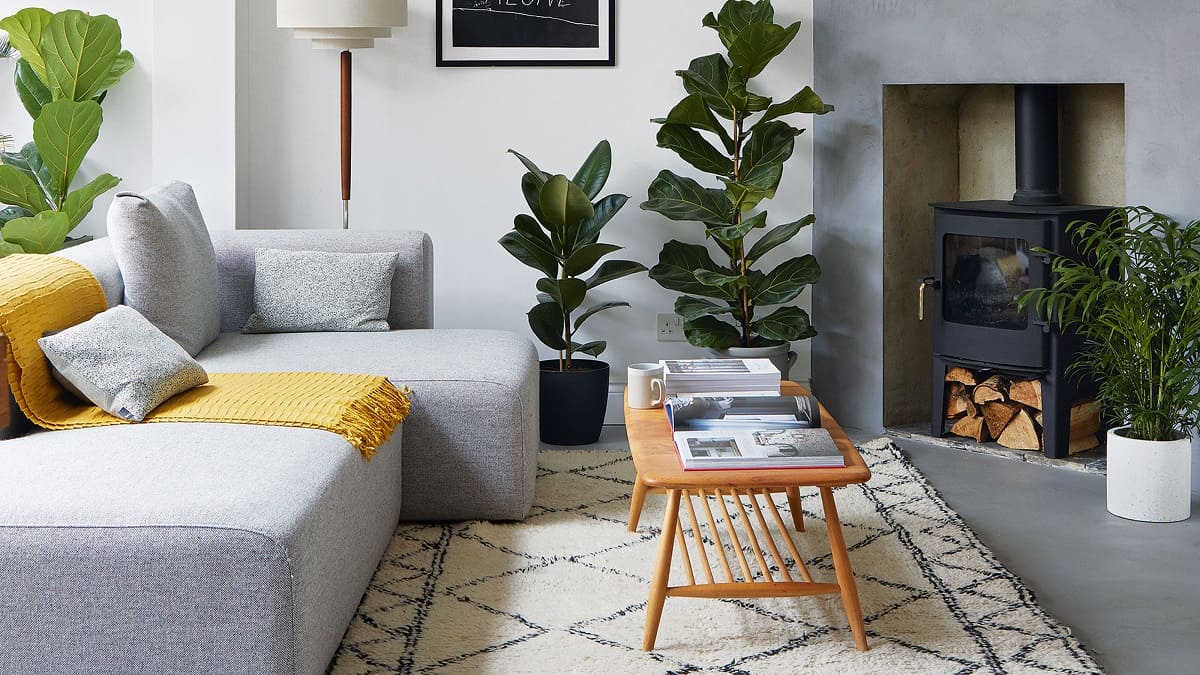Home>Interior Design>Curtain Mistakes To Avoid – 5 Curtain Expert Fixes To Remember


Interior Design
Curtain Mistakes To Avoid – 5 Curtain Expert Fixes To Remember
Modified: February 24, 2024
Avoid common curtain mistakes and enhance your interior design with these 5 expert fixes. Create the perfect ambiance for your home with our helpful tips.
(Many of the links in this article redirect to a specific reviewed product. Your purchase of these products through affiliate links helps to generate commission for Storables.com, at no extra cost. Learn more)
Introduction
When it comes to interior design, curtains are an essential element that can greatly enhance the overall aesthetic of a room. Not only do curtains provide privacy and control lighting, but they also add texture, color, and style to any space. However, choosing and hanging curtains is not as simple as it may seem.
Many homeowners make common curtain mistakes that can detract from the beauty and functionality of their rooms. In this article, we will explore five curtain mistakes to avoid and provide expert fixes to help you achieve the perfect look for your windows.
By being aware of these mistakes and implementing the recommended fixes, you can ensure that your curtains not only enhance your interior design but also serve their intended purpose effectively.
Key Takeaways:
- Choose curtain fabric wisely to balance privacy, lighting, and room size. Consider maintenance and cleaning needs to preserve their beauty and functionality over time.
- Measure accurately and hang curtains thoughtfully to enhance the room’s ambiance. Consider lighting and room proportions when selecting the size, fabric, and color of your curtains.
Mistake #1: Choosing the Wrong Fabric
One of the most common mistakes in curtain selection is choosing the wrong fabric. The fabric you choose will greatly impact the overall look and functionality of your curtains. It’s important to select a fabric that suits the style of your room while considering its practicality.
One common mistake is opting for thin or sheer fabrics when you actually need more privacy or light control. Transparent fabrics may allow ample light to filter through, but they offer little to no privacy. If you’re looking for privacy, consider choosing a thicker fabric or layering your curtains with a sheer panel.
On the other hand, using heavy fabrics in a small room can make it feel cramped and overwhelming. Similarly, using dark-colored fabrics in a small space can make the room look even smaller. In this case, it’s best to opt for lighter colors and lighter-weight fabrics that allow more natural light to enter the room and create an illusion of space.
Additionally, consider the purpose of the room when selecting the fabric. For example, if you’re choosing curtains for a bedroom, it’s advisable to choose fabrics that offer room darkening or blackout options to create a more conducive sleeping environment.
Lastly, consider the maintenance and cleaning requirements of the fabric. Some fabrics may require dry cleaning, while others can be easily machine washed. Choose a fabric that matches your lifestyle and the level of maintenance you’re willing to put in.
To avoid this mistake, take the time to explore different fabric options, consider the purpose and size of the room, and select a fabric that aligns with your style preferences and practical needs. Consulting with a curtain expert or interior designer can also be beneficial in making the right fabric choice.
Mistake #2: Selecting the Incorrect Size
Choosing the wrong size curtains can significantly affect the overall look and functionality of your windows. Ill-fitting curtains can make a room appear unbalanced or cluttered, detracting from the overall aesthetic appeal. To avoid this mistake, it’s important to measure your windows accurately and select the appropriate curtain size.
One common mistake is selecting curtains that are too short. Curtains that fall above the floor can make a room feel unfinished or incomplete. They also prevent you from utilizing the full length of the window, reducing the amount of light and privacy control. For an elegant and polished look, it’s recommended to choose curtains that either graze the floor or puddle slightly.
On the other hand, curtains that are too long can result in a messy and overcrowded appearance. Curtains that drag on the floor can collect dust and dirt, requiring frequent cleaning. If you have limited space or prefer a minimalist look, opt for curtains that hang just above the floor.
Another aspect to consider is the width of the curtains. Choosing curtains that are too narrow may not effectively cover the entire window, allowing unwanted light to seep through and compromising privacy. Similarly, curtains that are too wide can appear bulky and bunch up when drawn closed. To ensure proper coverage and functionality, your curtains should be approximately double the width of your window.
It’s worth noting that curtain size can also impact the perceived height and width of a room. Hanging curtains higher and wider than the actual window frame creates the illusion of a larger space and higher ceilings. This technique can be especially beneficial in small rooms or spaces with low ceilings.
When selecting curtains, take accurate measurements of your windows, consider the desired curtain length and width, and factor in the overall room proportions. If you’re unsure, it’s always a good idea to consult with a curtain expert who can guide you in choosing the right size curtains for your windows.
Mistake #3: Overlooking the Hanging Method
The way your curtains are hung can greatly impact their appearance and functionality. Many homeowners overlook the hanging method and end up with curtains that don’t do justice to their windows or interior design. To avoid this mistake, it’s important to carefully consider the hanging method that best suits your curtains and desired style.
One common mistake is using the wrong type of curtain rod or track. The type of rod or track you choose should be compatible with the weight and style of your curtains. For example, heavy drapes may require a sturdy, thick rod with support brackets, while lightweight sheers can be hung on a lighter-weight rod. Choosing the wrong rod or track can result in sagging curtains or difficulty with opening and closing them.
Another aspect to consider is the type of curtain hardware. This includes curtain rings, hooks, or clips that attach the curtains to the rod or track. Using the wrong type of hardware can affect the way your curtains drape and hang. For example, using rings that are too small for the rod can cause the curtains to bunch up and not slide smoothly.
Additionally, pay attention to the placement of the rod or track. Hanging the curtains too close to the window frame can make the windows appear smaller and restrict the amount of light entering the room. To create the illusion of larger windows and more natural light, consider placing the rod or track wider than the actual window frame.
Finally, consider the curtain style when choosing the hanging method. Traditional pleated curtains may require hooks or rings, while tab-top or grommet curtains can be hung directly on the rod. Be sure to select a hanging method that complements the style and design of your curtains.
By carefully considering the hanging method, choosing appropriate curtain hardware, and placing the rod or track correctly, you can ensure that your curtains hang beautifully and function seamlessly. If you’re uncertain about the best hanging method for your curtains, seek advice from a curtain expert who can provide guidance based on your specific needs and preferences.
When hanging curtains, make sure to measure the height and width of your windows accurately to avoid any fitting mistakes.
Mistake #4: Neglecting to Consider the Room’s Lighting
Lighting plays a crucial role in creating the desired ambiance and mood in a room. Neglecting to consider the room’s lighting when choosing curtains can result in a less-than-optimal environment. To avoid this mistake, it’s important to pay attention to how curtains can affect natural and artificial lighting in the space.
One common mistake is selecting curtains that block out too much natural light. While it’s important to have privacy and light control, completely blocking out natural light can make a room feel dark and gloomy. If you want to maintain a bright and airy atmosphere, opt for curtains that allow some sunlight to filter through. Sheer or semi-sheer fabrics are great options as they provide privacy without compromising on natural light.
On the other hand, if you’re looking for room darkening or blackout capabilities, consider choosing curtains with a lining or double-layered fabrics. These types of curtains are designed to block out a significant amount of natural light, making them ideal for bedrooms or media rooms where darkness is desired.
Another aspect to consider is the color of your curtains and how it can impact the room’s lighting. Dark-colored curtains absorb more light and can make a room feel dimmer, especially if your windows are small. In contrast, lighter-colored curtains reflect more light and can brighten up a space. Consider the size and natural lighting of the room when choosing the color of your curtains.
Additionally, take into account the artificial lighting in the room. Consider how your curtains will interact with lamps, overhead lights, or sconces. For instance, if you have a lamp near a window, choose curtains that won’t obstruct the light from reaching the rest of the room.
By carefully considering the room’s lighting needs and how curtains can affect it, you can make informed decisions that create the perfect balance of natural light and ambiance in your space. Assess the natural light levels, choose the appropriate fabric and color, and ensure that your curtains complement the artificial lighting sources in the room.
Mistake #5: Ignoring the Maintenance and Cleaning
When it comes to curtains, maintenance and cleaning are often overlooked aspects. Neglecting to consider the maintenance requirements of your curtains can lead to premature wear and tear, as well as a loss in their overall appearance. To avoid this mistake, it’s important to understand the proper care and cleaning methods for your curtains.
One common mistake is ignoring the care instructions provided by the manufacturer. Each type of fabric may have specific cleaning requirements, such as dry cleaning or machine washing. It’s important to follow these instructions to ensure that your curtains maintain their quality and longevity. Read the care labels carefully and take note of any special precautions or recommended cleaning techniques.
It’s also important to regularly clean your curtains to prevent the buildup of dust, allergens, and stains. Failure to do so can result in curtains that look dingy and unattractive. Regular vacuuming with a brush attachment can help remove dust and dirt from the surface of the curtains. If your curtains are machine washable, follow the proper instructions to keep them fresh and clean.
In addition to cleaning, consider the maintenance needs of your curtains. For example, if you have curtains with pleats or drapery hooks, periodically check for any loose or missing hooks and have them replaced if necessary. This will ensure that your curtains hang properly and maintain their desired shape.
Another aspect to consider is sun damage and fading. Curtains exposed to direct sunlight for prolonged periods can fade and lose their vibrant colors. To mitigate this, consider using curtain liners or draperies that offer UV protection. You can also rotate and alternate curtains in different rooms to distribute the sunlight exposure more evenly.
Lastly, consider the durability and quality of the fabric when selecting curtains. High-quality materials are often easier to maintain and clean. Investing in curtains made from durable fabrics can save you time and effort in the long run, as they will require less frequent cleaning and demonstrate greater resistance to wear and tear.
By paying attention to the maintenance and cleaning needs of your curtains, you can ensure that they remain in good condition and continue to enhance the beauty of your space. Follow the manufacturer’s instructions, clean them regularly, and give them the necessary care and attention they require.
Conclusion
Choosing and hanging curtains may seem like simple tasks, but they require careful consideration to ensure that they enhance both the aesthetics and functionality of a room. By avoiding common curtain mistakes and implementing expert fixes, you can create a beautifully designed space that reflects your personal style and meets your practical needs.
Mistakes such as choosing the wrong fabric, selecting the incorrect size, overlooking the hanging method, neglecting to consider the room’s lighting, and ignoring the maintenance and cleaning requirements can significantly impact the overall look and feel of your curtains, as well as the ambiance of the room itself.
To avoid these mistakes, take the time to research and explore different fabric options that suit the style and purpose of the room. Measure your windows accurately to select the correct curtain size and ensure proper coverage. Consider the hanging method, choosing the appropriate curtain rod or track, and selecting the right curtain hardware to ensure optimal functionality.
Furthermore, pay attention to the natural and artificial lighting in the room when choosing curtains. Consider how curtains can affect the amount of light entering the space and choose colors and fabrics accordingly.
Lastly, understand the maintenance and cleaning requirements of your curtains to keep them in good condition and retain their appearance and durability over time. Follow the manufacturer’s care instructions, regularly clean them, and address any maintenance needs to ensure they remain fresh and beautiful.
Incorporating these expert fixes into your curtain selection and hanging process will result in a well-designed and well-functioning space that brings both aesthetics and practicality together. By avoiding these common curtain mistakes, you can achieve a harmonious and visually appealing interior design that showcases your personal style and creates a welcoming atmosphere in your home.
Frequently Asked Questions about Curtain Mistakes To Avoid – 5 Curtain Expert Fixes To Remember
Was this page helpful?
At Storables.com, we guarantee accurate and reliable information. Our content, validated by Expert Board Contributors, is crafted following stringent Editorial Policies. We're committed to providing you with well-researched, expert-backed insights for all your informational needs.















0 thoughts on “Curtain Mistakes To Avoid – 5 Curtain Expert Fixes To Remember”